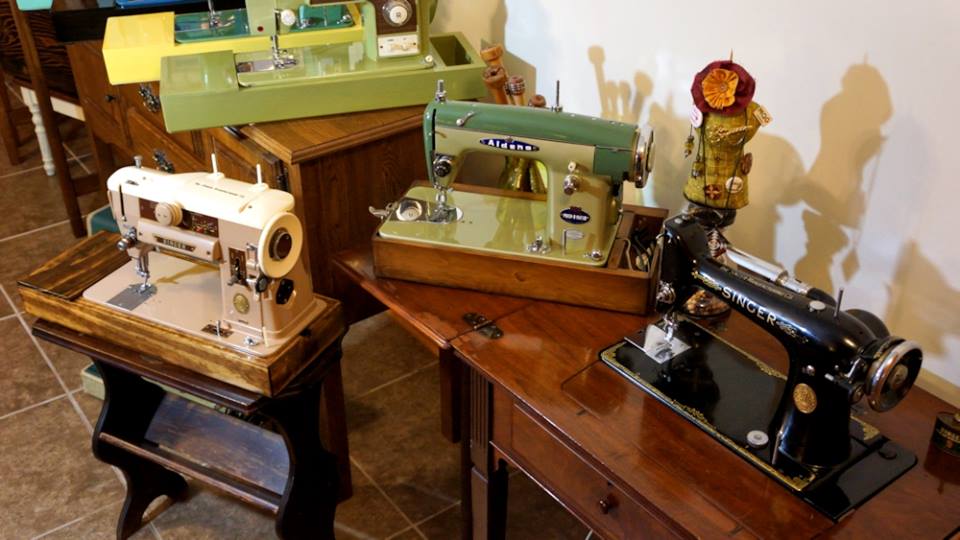Beginning in 1923, the Singer Company offered a series of four books in their Singer Sewing Library. The covers of these books, each 48 or more pages in length, featured colorful illustrations.
The publication of the Sewing Library, with copyrights renewed multiple times throughout the 1920s, coincided with the principle manufacturing years of the Singer 101, and the 101 is featured in the colorful images.
The 101 is a significant model in the Singer lineage, being the first domestic "home sewing" model specifically designed as an electric, as opposed to a model which could be treadled, handcranked, or motorized. The 101 features a "potted" motor, the likes of which even casual enthusiasts will recognize as the precursor to the much-lauded 201-2, as well as the 15-91.
 |
| The Singer 101-11 portable was made with aluminum. |
Notice that in the image above, as well as the following covers from the Singer Sewing Library series, the 101 is always displayed from the rear. My guess is that this was a subtle effort by Singer's marketing minds to familiarize buyers with the appearance of the potted motor - to normalize the new technology as well as show off it's sleek design, including the streamlined appearance of the light. Consider also that these images of the 101 were paired with the subtitle of the series, The Modern Singer Way.
Advertising their "Sewing School" classes inside the Sewing Library books, we see an array of ladies looking fashionable with modern hairstyles, all sewing at 101s, which we again see from the rear of the machine so that the distinctive, rounded appearances of the potted motor cover is further ingrained in our minds.
Finally, within the pages of the books, the front of the 101 is revealed:
If you collect Singers and you happen upon one of these 101s, particularly an aluminum portable model, I recommend you grab it if the price is palatable. There were fewer than 250,000 made - a seemingly large number, yes, but they aren't nearly as common in the wild as the 201 which was manufactured for twice as many years. As Singer's first deliberately "electrified" home model, with its elegant form and early potted motor design, it will always be a conversation-worthy addition to your collection.
Here is the 101-4 in the Still Stitching collection, lower-right. Notice the stitch regulator dial, shiny nickel, near the base of the pillar.








2 comments:
Thank you for sharing this information on the Singer 101. I've had my 101 for about 5 years. She was given to me by a relative when I was having trouble with topstitching denim on my modern machine. The large throat space is awesome for bulky projects and the stitch quality is exquisite. I pretty much use this machine for most things these days. The decals on the bed are mostly worn away as is the little arrow to indicate the stitch length on the dial. I wonder how much cloth this machine has stitched in her 90 plus years, and I am proud to think I am part of her history.
Thank you very much for the information on the singer 101,
I found one in aluminium and woul'd like to know if they are noisy
Any help is apreciated
take care
Post a Comment